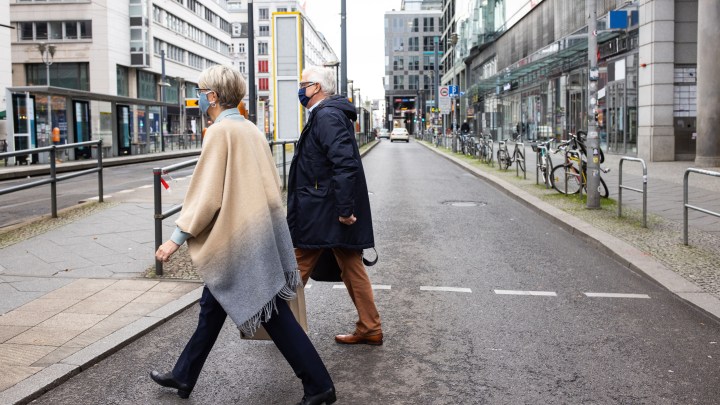
Omicron worries could keep some workers out of labor force
Omicron worries could keep some workers out of labor force

Unemployment claims remained low last week at around 220,000. It wasn’t a 50-year low like the week before, but it’s still a sign that the labor market continues to be pretty tight. One factor contributing to the short supply of workers is the many who haven’t returned to the labor force due to health concerns tied to the pandemic — concerns that, in the face of the new omicron coronavirus variant, are unlikely to be alleviated anytime soon.
In October, there were about 3.6 million more Americans who didn’t have a job and weren’t looking for one than before the pandemic, according to labor economist Aaron Sojourner at the University of Minnesota.
“The virus is still out there, and it’s making the labor market sick,” he said.
Surveys of unemployed people by the job site Indeed — a Marketplace underwriter — indicate as much. “Among people who are unemployed, the major reason why they say they’re not urgently looking for a new job is that they are hesitant to return to in-place work because of health concerns related to the pandemic,” said economic research director Nick Bunker.
In the absence of the pandemic, there would likely be 5 million to 6 million more Americans currently employed, said Julia Pollak, a labor economist at job site ZipRecruiter.
“About half of them are people who are retired, but who would otherwise have either stayed at work or ‘unretired’ and gone back to the workforce,” she said.
Workers over 65 were the fastest-growing segment of the labor force before the pandemic, but they’ve retired at an accelerated rate over the last two years. They’ve also been slower to return to the workforce as the economy has improved compared to the last recession, per Richard Johnson, a senior fellow at the Urban Institute.
“The other factors that have been encouraging people to work longer at older ages, those are still in place,” he said — like concerns about financial security, increasing health care costs and lower physical demands at most jobs.
But continued worries about the pandemic could be changing the calculus for older workers in a more permanent way, said labor economist Sojourner.
“A lot of older Americans turned on retirement income, turned on Social Security, made changes to their lifestyle and are making it work,” he said. “It’ll be harder to tempt them out of that.”
Such a reversal, he said, could shrink the size of the labor pool for years to come.
There’s a lot happening in the world. Through it all, Marketplace is here for you.
You rely on Marketplace to break down the world’s events and tell you how it affects you in a fact-based, approachable way. We rely on your financial support to keep making that possible.
Your donation today powers the independent journalism that you rely on. For just $5/month, you can help sustain Marketplace so we can keep reporting on the things that matter to you.


















